Gone are the days when brands used to create one-dimensional marketing campaigns to promote their products with the ultimate agenda to increase sales.
In the present times, marketing is more consumer-centric as the power of success lies in the hands of consumers. Brands are creating opportunities where they can get users to interact, engage, and advocate for their marketing campaigns.
So, user-generated content is the recipe marketers use for executing successful marketing campaigns.
But why so much emphasis on UGC? Because stats tell us that consumers find UGC to be 9.8 times more impactful than influencer content when they make a purchase decision.
So, how exactly can brands leverage UGC?
Well! We have explored the depths of user generated content to understand what it is and how brands can make it a part of their marketing campaigns.
Key Takeaways
User-generated content (UGC) refers to any form of content—photos, videos, reviews, testimonials, blogs—created by real customers sharing their genuine experiences with a brand. It can be organic (unpaid) or paid.
UGC is 9.8x more impactful than influencer content and it is effective in driving trust, engagement, and conversions. Also, UGC-based ads get 4x higher click-through rates (CTR) than traditional ads, thus helping brands increase their profits over time.
Brands must strategically integrate UGC into their broader marketing and social media plan, but before you do that make sure to set clear UGC guidelines, and moderate submissions to protect your brand’s reputation.
What Is User Generated Content (UGC)?
User generated content (UGC) is any form of content created and shared by users/customers based on their experiences, opinions, ideas, or feedback on digital platforms, especially social media networks, which are the hub of user-generated content.
In terms of marketing, UGC is the content that your customers create for your brand. It could be both unsponsored and sponsored, and is usually in the form of online reviews, product photos, customer feedback, product videos, etc.
As it is experience-driven and honest, UGC is known to be the most reliable, trustworthy, authentic, and relatable content form compared to brand-pushed marketing content. This is one of the reasons why marketers value it more compared to other content forms.
One such popular UGC campaign was Apple’s #ShotoniPhone. It has been around for more than 10 years now, and later Apple also created a national advertising campaign using it, wherein even their paid ads were shot on an iPhone. This campaign became a huge success, and it reiterated people’s trust in the brand.
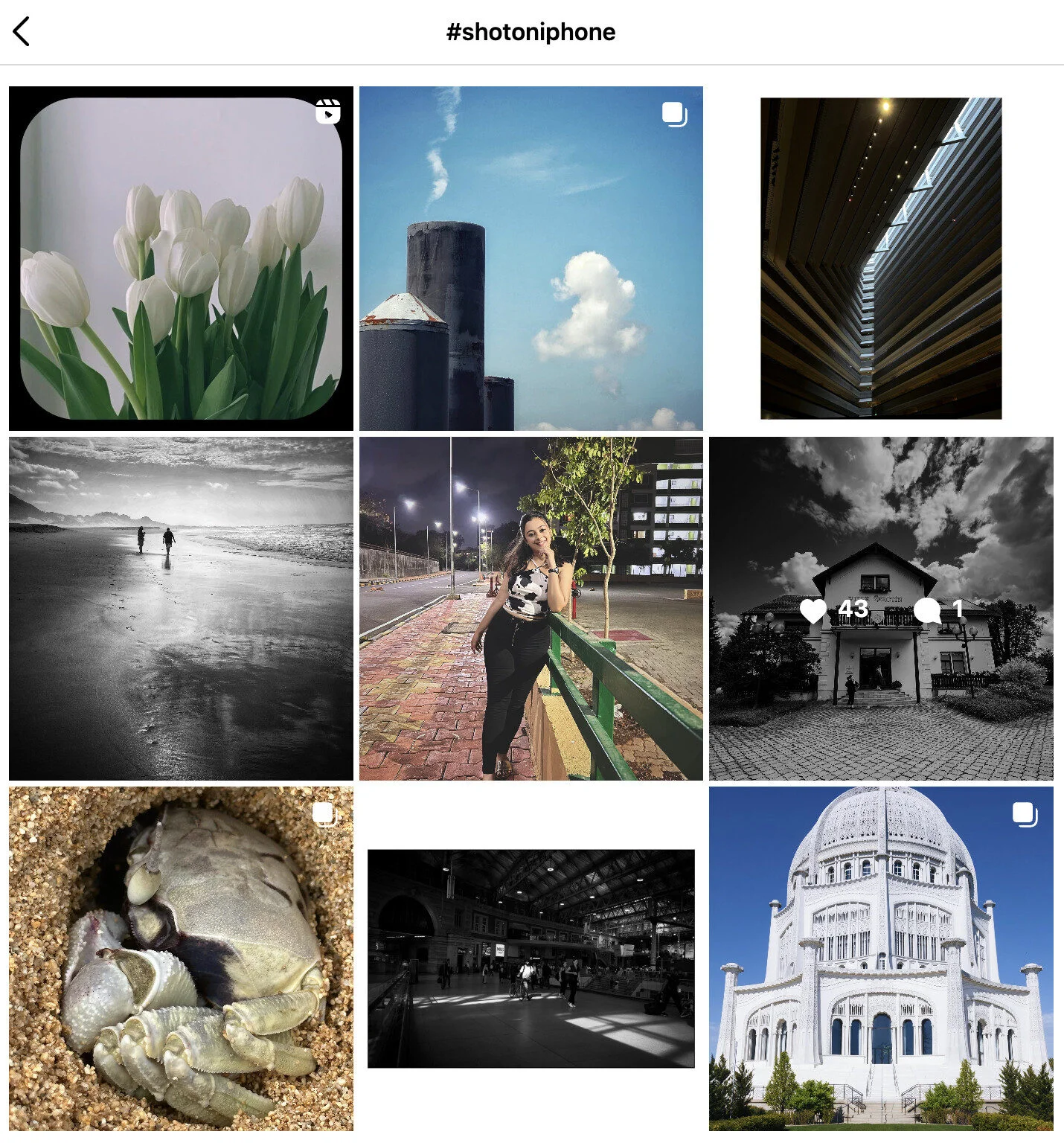
Types of User Generated Content
User generated content comes in different forms, but we can broadly categorize it as organic UGC or paid UGC.
Organic user generated content is the content that is not paid for by the brands. These are reviews by genuine users sharing their everyday experiences with the product.
But when brands compensate the UGC creators to say positive things about their products or services, it falls in the category of paid user-generated content. While organic UGC is spontaneous and not controlled by brands, paid UGC is more controlled, mostly positive, and has a targeted reach.
Paid UGC may sound somewhat similar to influencer marketing, but it’s not. It involves brands paying their users/customers to produce content for the brand’s own social media page. This helps them build social proof. Influencer marketing, on the contrary, is when UGC creators promote a brand on their personal social media pages.
Here are some key types of UGC content that you see online:
1. Comments
When users show their love towards a brand by sharing their opinions about it, mostly by replying to the brand’s social media posts. Comments are one of the best forms of authentic and organic UGC.
Below you can see some customer replies on a post by Benefit Cosmetics, wherein customers are praising their foundation in the comments.
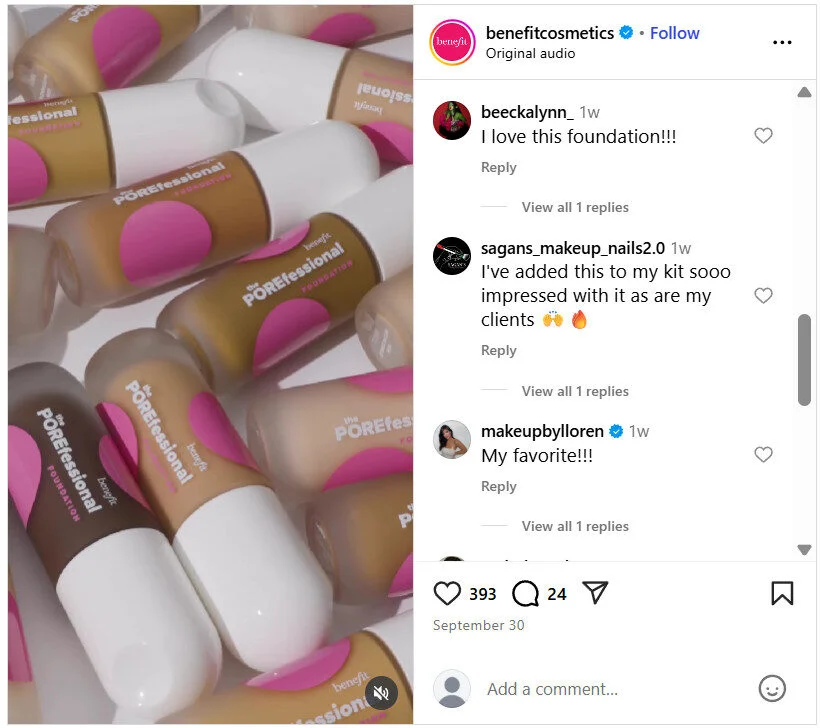
2. Photos:
Customers often share pictures of themselves online, using a particular product/service. Such customer photos also motivate other potential customers to try it.
The post below shows a user posting her favorite Daniel Wellington watch on social media. This photo was later reposted by the brand in their stories. This is a perfect example of how organic user-generated content works.

3. Sharing Product Videos
When customers post videos talking about a brand or its products, it acts like a powerful word-of-mouth marketing.
Below you can see a video by Cody Rigsby, talking about the Protein Cold Brew coffee of Starbucks. This video was later reshared by Starbucks on its feed.
4. Blogs
Sometimes people or other brands talk about your product or service in detail in the blogs that they write.
Below, you can see a snippet from a roundup article by Hostinger, wherein they have talked about Grammarly as the best grammar assistant.
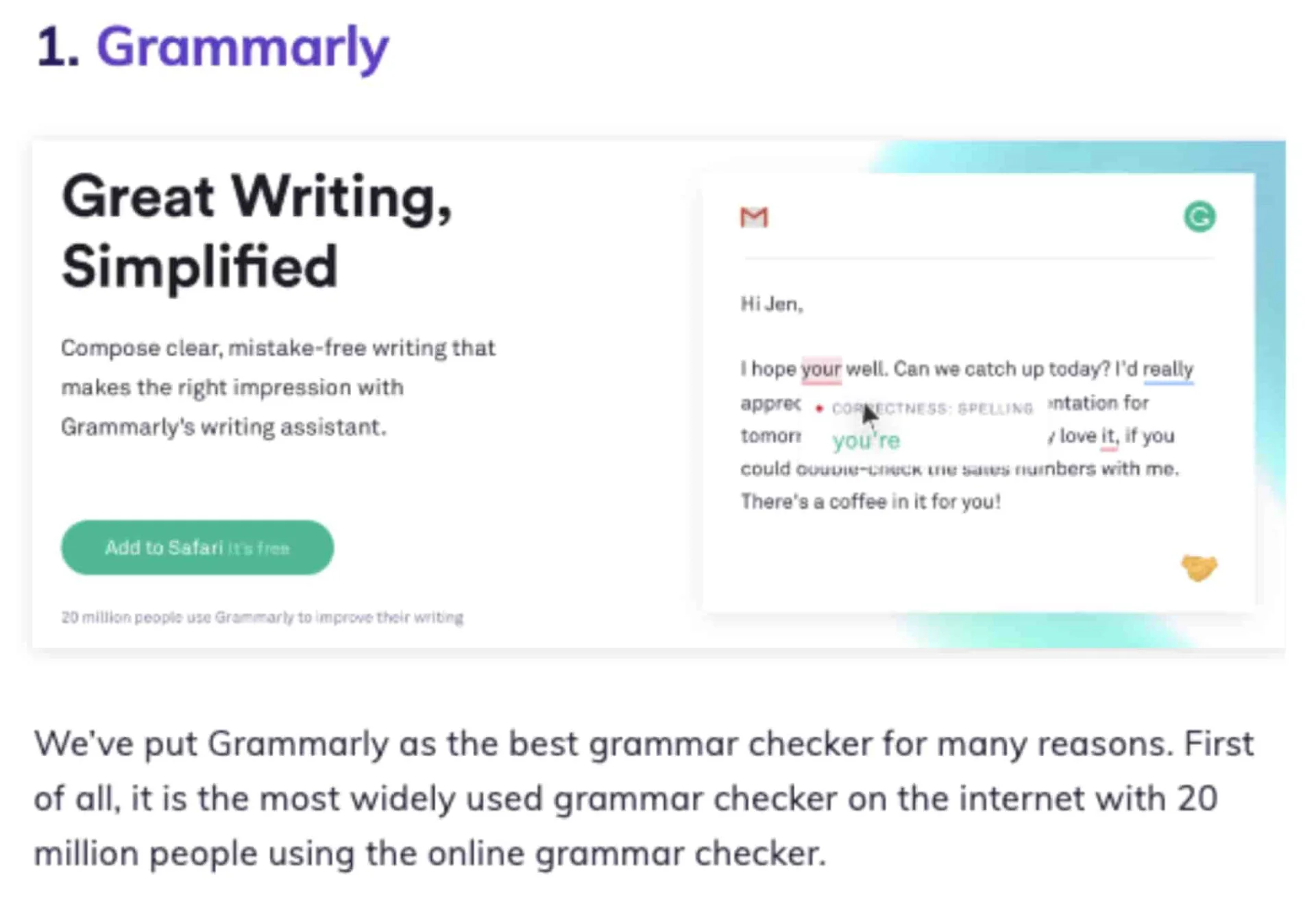
5. Customer Reviews or Testimonials
When people review a brand or share their video testimonials talking about it on any social media platform, it falls under the category of UGC.
In the image video, you can see Florence Oginni reviewing some Glossier products and saying positive things about them. Such testimonials can really help businesses bring in more customers.
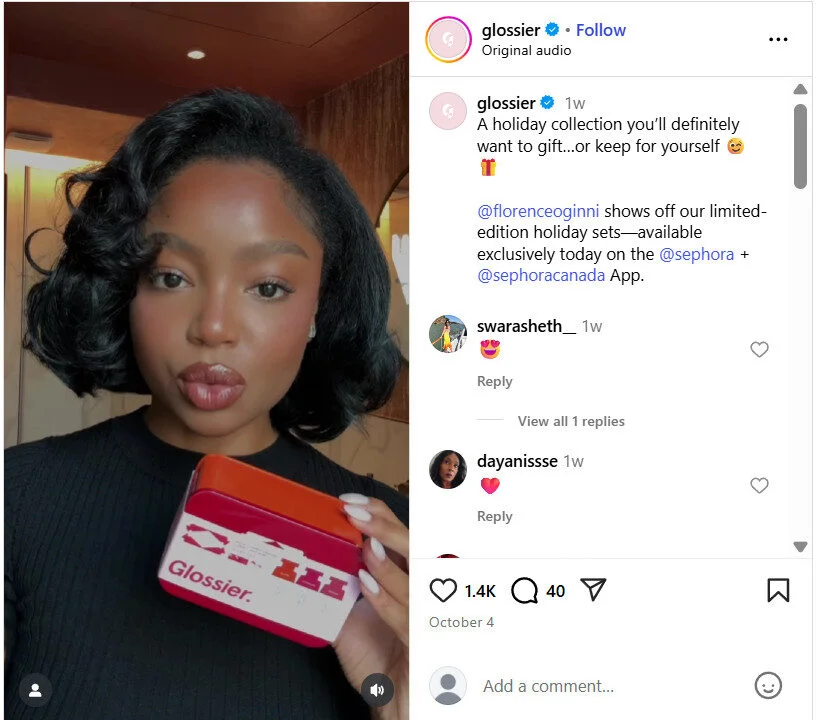
We also have some social media testimonial templates that you can explore if you are looking to post testimonials for your favorite brands.
Why is User Generated Content Important For Successful Marketing
There are multiple advantages of user generated content, but to truly unlock its potential, you must create a social media content strategy that integrates UGC with your overall marketing strategy.
Here are some benefits of user generated content for businesses:
1. Builds Trust and Authenticity
User generated content comes directly from your customers, which means that it’s perceived as honest and authentic, thus helping build trust. Additionally, it adds emotional and relationship-building elements to your marketing.
But user-generated content allows marketers to build an emotional connection with the audience, gain their trust, show authenticity, and form meaningful relationships.
In the post below, Moxy Hotels showcases a paid collaboration with travel influencers to showcase a couple’s romantic getaway in Paris. This authentic, real-life storytelling and visuals are a perfect example of how UGC-driven partnerships can inspire trust and travel aspirations.
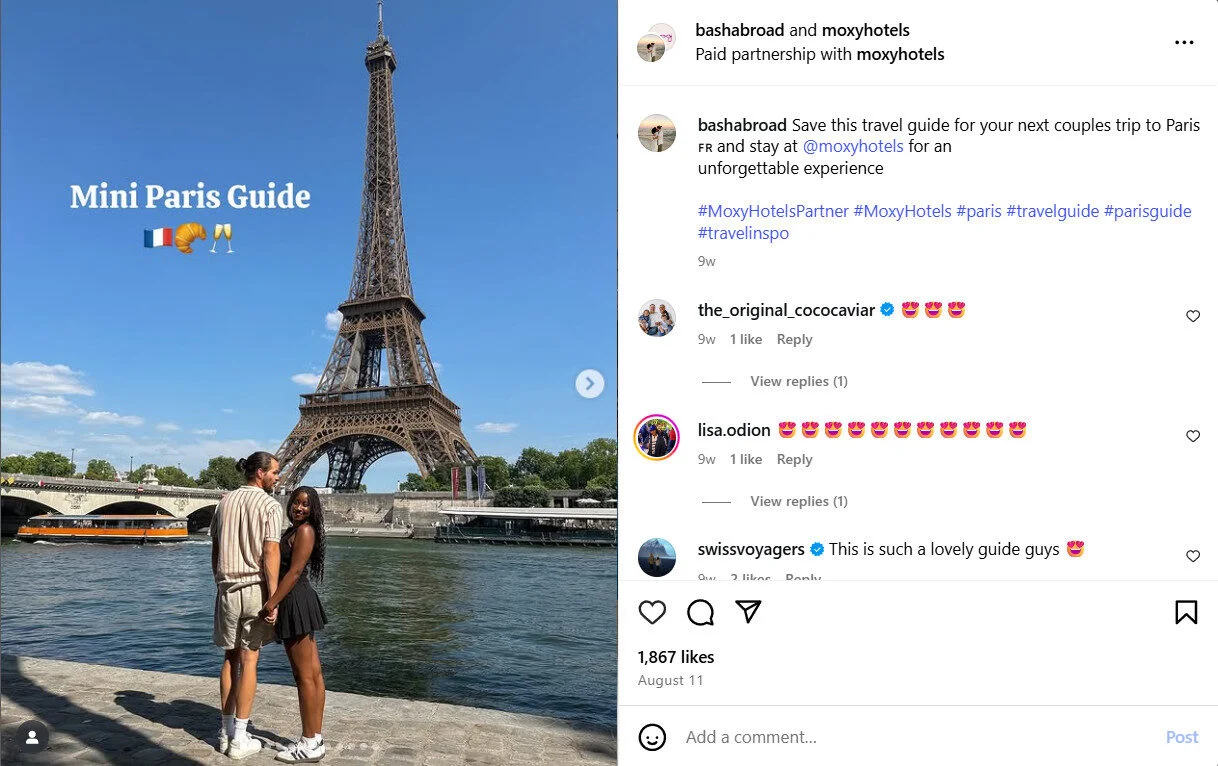
Social proof is the validation customers provide to the brand about the trust, authenticity, and reliability of their products & activities. Having social proof is extremely important as it can largely influence the purchase decisions of your prospective customers.
It won’t be possible for your brand to create marketing campaigns to build social proof, as self-promotion is not what consumers will trust. Therefore, UGC presents a perfect solution that helps businesses leverage social proof on social media. It even makes your promotional message and information sound more reliable and trustworthy.
Aerie, a sustainable fashion brand, recently launched a UGC campaign #AerieREAL with a commitment to showcase women of all sizes in their stories and not just the ones that fit into the stereotypical ‘model look’.
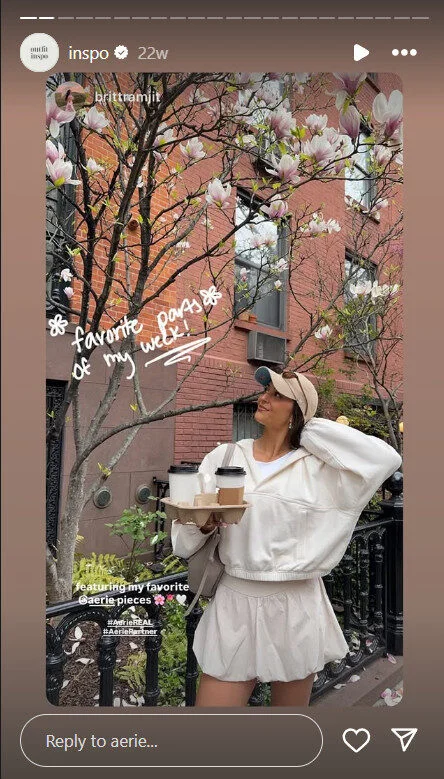
3. Enhance User Engagement
What is it that consumers look to engage with brand campaigns? The answer is quite simple: the campaigns must have engaging or interesting customer content, interactive elements, authenticity & creativity, trustworthiness, and a value proposition.
These attributes are all present in the user-generated content, and when you curate and make the content more refined & targeted, it becomes hugely engaging & valuable to consumers.
One example of this is the #RunLikeAGirl campaign by Nike, which saw a massive user engagement.

4. Wide Reach & Exposure
The first aim of your marketing strategy is to reach a massive audience, so you can increase your brand’s engagement and conversions.
User-generated content campaigns can help a brand achieve these goals quickly and effectively. Businesses can create custom brand hashtags and encourage customers to share their views & opinions using that hashtag on social platforms.
The image below shows results for a branded hashtag #CocaCola.
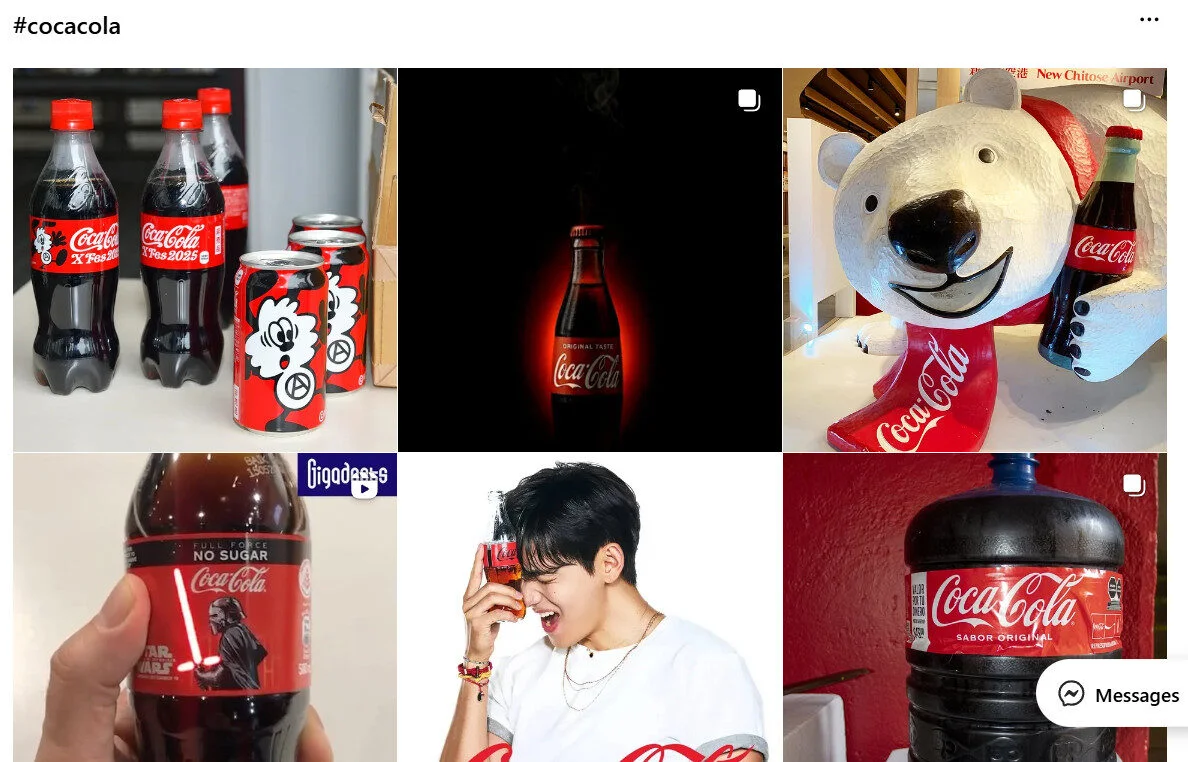
When users do so, businesses can benefit from better exposure and reach more audiences without any demographic limitations.
5. Increase Conversions & Revenue
Conversions and revenue are the ultimate goals that marketers have in mind while creating campaigns, as these are important for the survival & success of a brand.
This is where user generated content can greatly help. People tend to trust UGC much more than the brand’s advertising when it comes to buying products/services. So, UGC content when posted on social media platforms adds validation & credibility to your marketing message. This is also a perfect example of how social media can increase conversions and revenue for a brand.
6. Builds An Online Community
Humans tend to form communities, be it small or large, with other like-minded people with similar interests, likes, preferences, or share the consumption experiences of a product/service of a brand.
So, by using the customer content from loyal users or brand advocates, you can build an online community. Harley-Davidson is an excellent example of having influential online communities.

Members in these communities post positive content from time to time, showcasing their brand loyalty. This increases your brand exposure and desirability and improves your brand reputation.
7. Showcase Brand Advocacy
Brand advocacy is when the customers of a brand believe in it, show loyalty, and show advocacy to other consumers, i.e., speak positively & all good things about the brand.
If your brand has these loyal customers or, even better, brand advocates, you can use their created content to showcase brand advocacy that will help in attracting new consumers.
For instance, when “Stranger Things Season 2” launched on Netflix, they ran a campaign #strangerthings2. This hashtag nearly generated 2 million Instagram posts, and it even became the “most-tweeted-about streaming series.”
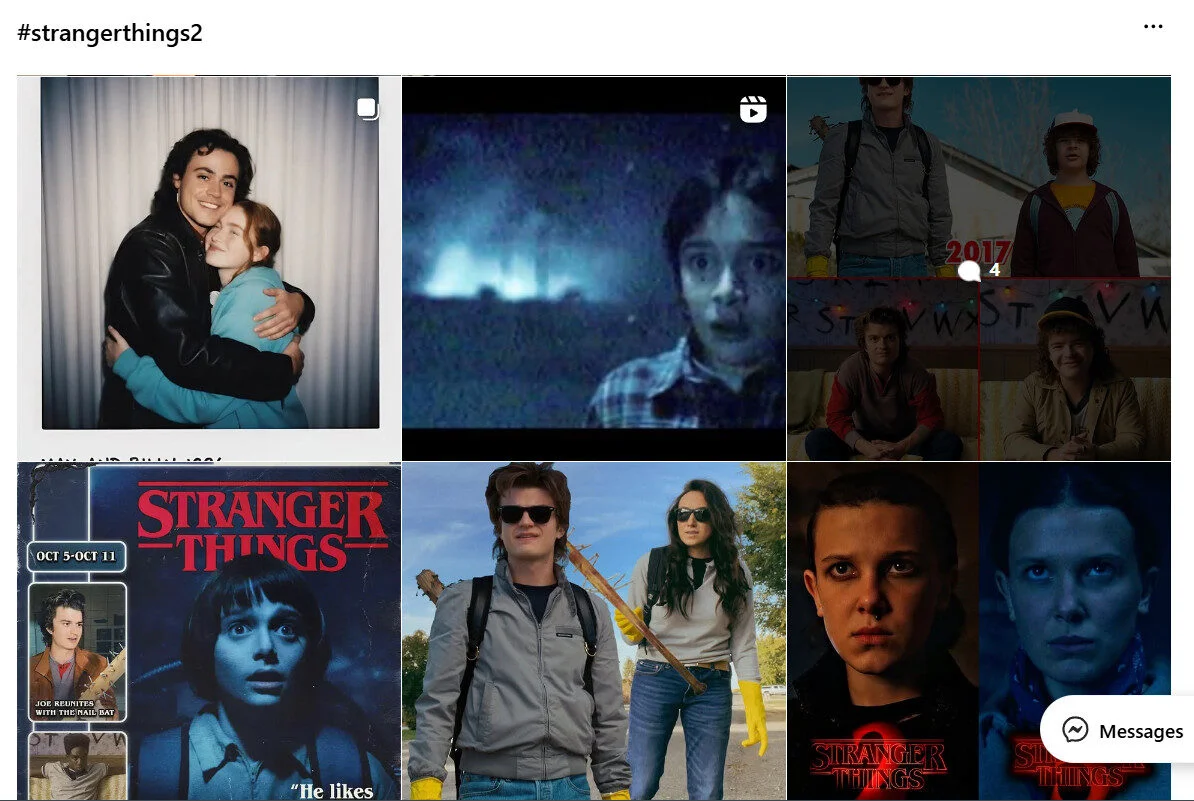
Strategies to Get More User-Generated Content for Your Brand
If you are looking to get more UGC, the first step is to encourage your target audience to create posts using your branded hashtags. This will require you to make some strategies that will encourage your users to churn out more content.
Here are some ways that can help you get more UGC:
Hosting a contest is one of the best ways to get more user-generated content for your brand. Here are some effective social media contest ideas that you can try.
A perfect example of this is the #RedCupContest Starbucks hosts on Instagram every December.
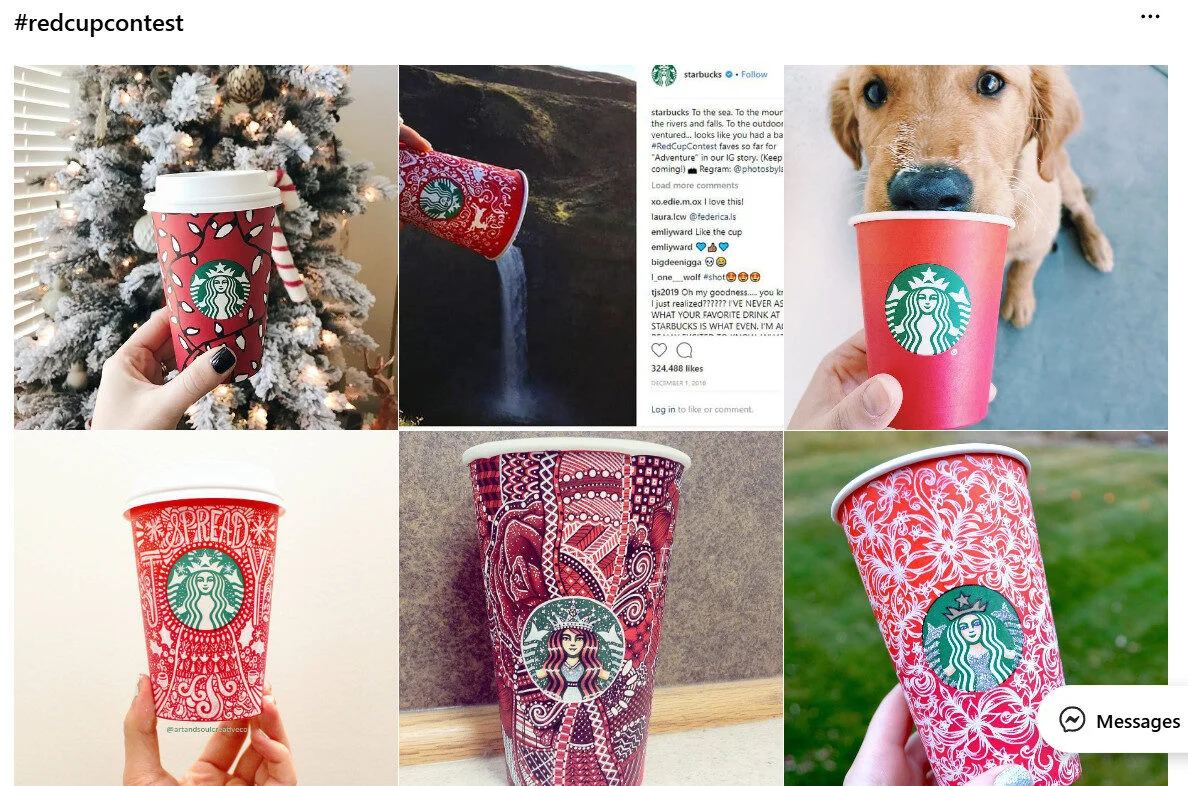
This contest not only helps Starbucks gather thousands of customer photos, but it also directly impacts their sales during the holiday season. After all, you’ll need to buy a Starbucks drink in a red cup to participate.
When launching a contest, be sure to clearly state the rules to share user generated content – including how users can participate.
2. Create a Unique Hashtag
Creating your brand’s very own hashtag helps promote your brand on social media channels like Twitter and Instagram.
A brand hashtag is also a great way for brands to find the posts that their customers have written about them. Read this blog to understand how you can effectively use hashtags for your social media marketing.
Here’s a snapshot of user-generated content created that included #samsung in their descriptions:
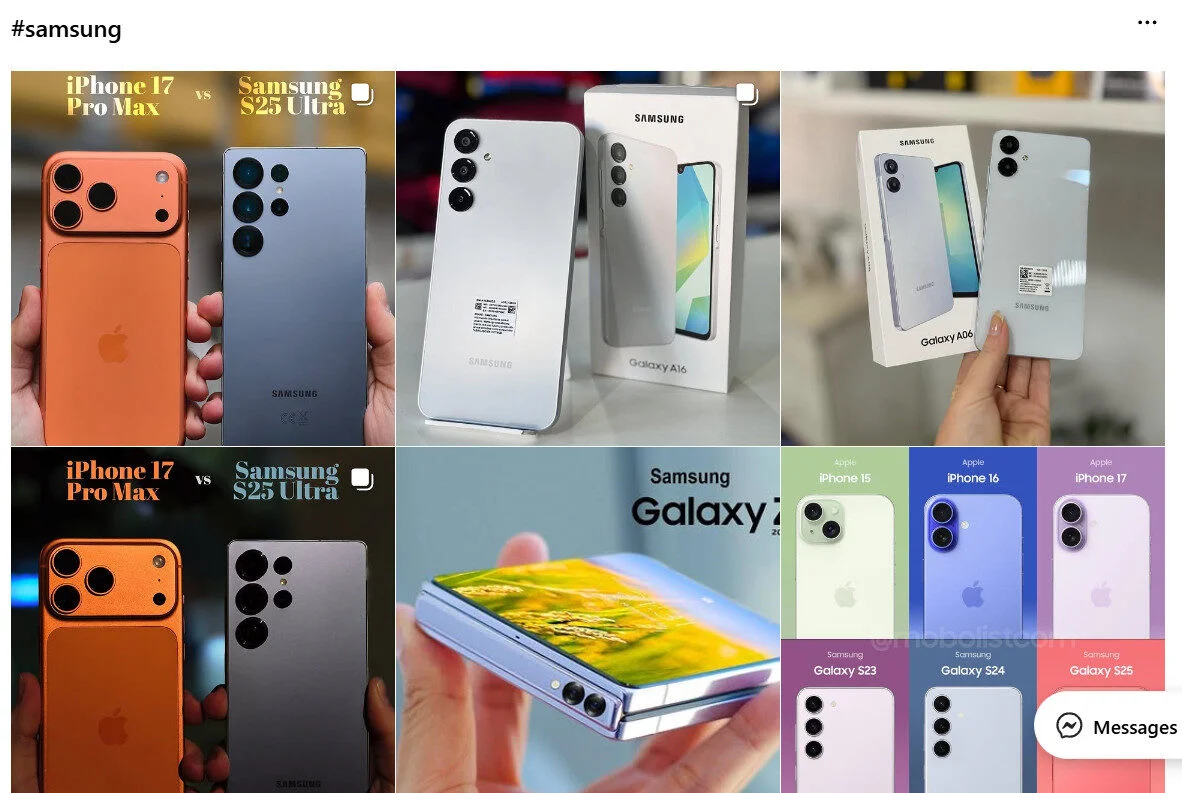
What’s great about this is that the user-generated content’s already published. All you’ll need to do is reach out to these users and ask if you can repost their content on your website or other social media accounts.
Many of them will be happy to let you. After all, who doesn’t like added exposure for their accounts?
3. Ask For Feedback From Users
There’s a saying: “You have not because you ask not.”
If you want your customers to leave you a review of your product or brand, then go ahead and ask them. You can send them a review email, like the one shown below from Gecko.
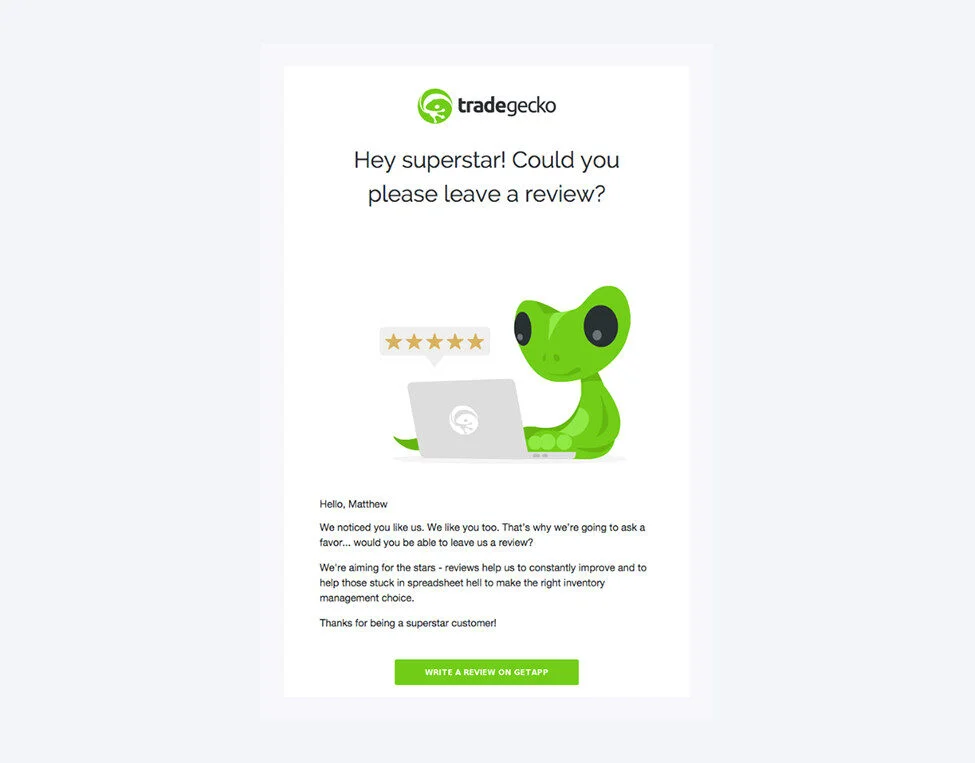
Another way to encourage your customers to leave a review is by adding a feedback form right below your content, so they can fill it out.
Hosting Canada makes it easy to generate reviews of online hosting providers by providing a “Leave a review” CTA at the bottom of each of their reviews.
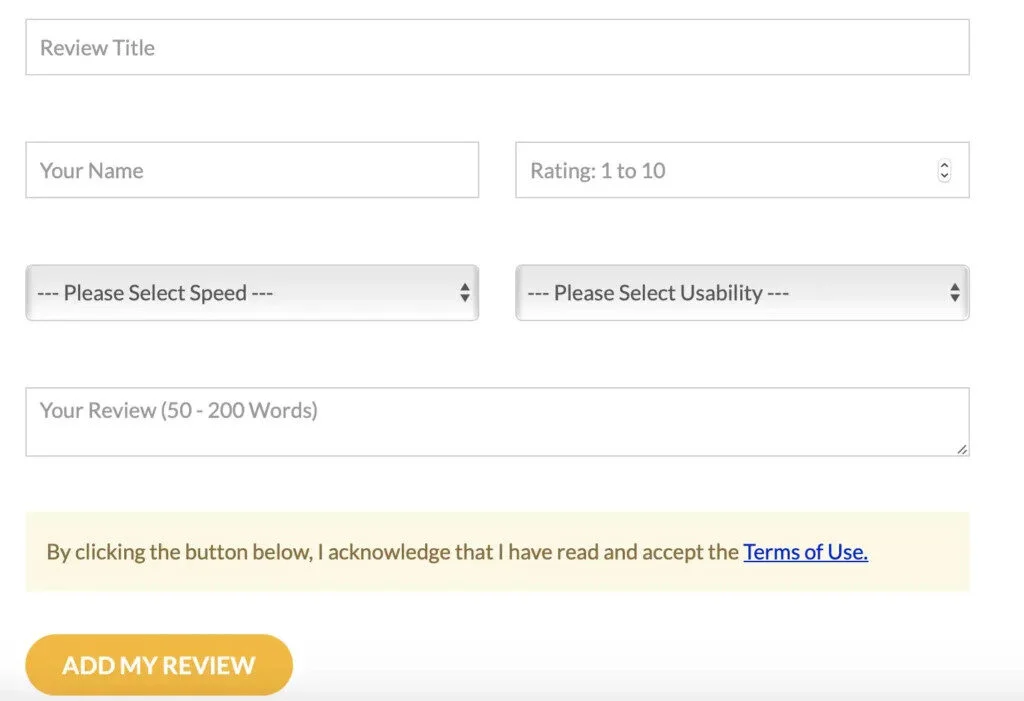
Right underneath this are the reviews left by past and current customers of the product being reviewed.
4. Collaborate With Influencers or Micro Creators
Working with influencers and content creators who are also your customers benefits your brand in two ways.
First, they know what types of content will resonate well with your target audience. That way, you ensure that the UGC they’ll be creating for you will yield results.
Second, since they already have a substantial following and are highly respected within their niche, it’ll give your brand and product a boost. Here are some ways that can help you find the right social media influencers for your business.
For example, vlogger and success coach Amy Landino is famous for her organization and time management tips. Since she often uses bullet journaling herself, she was a perfect choice for Ryder Carroll—the creator of the Bullet Journal system—to partner with when he launched his book on the Bullet Journal method.

5. Create an Employee Engagement and an Ambassador Program
Your employees and your loyal fans are your most valuable assets.
When it comes to your employees, the Edelman Trust Barometer shows that your customers are more willing to trust your employees over your senior leaders, stakeholders, or even you (OUCH)!
Several brands have leveraged their employee engagement in the past and achieved great results. For instance, HubSpot has a HubSpot Life Instagram account where they publish the content created by their employees.
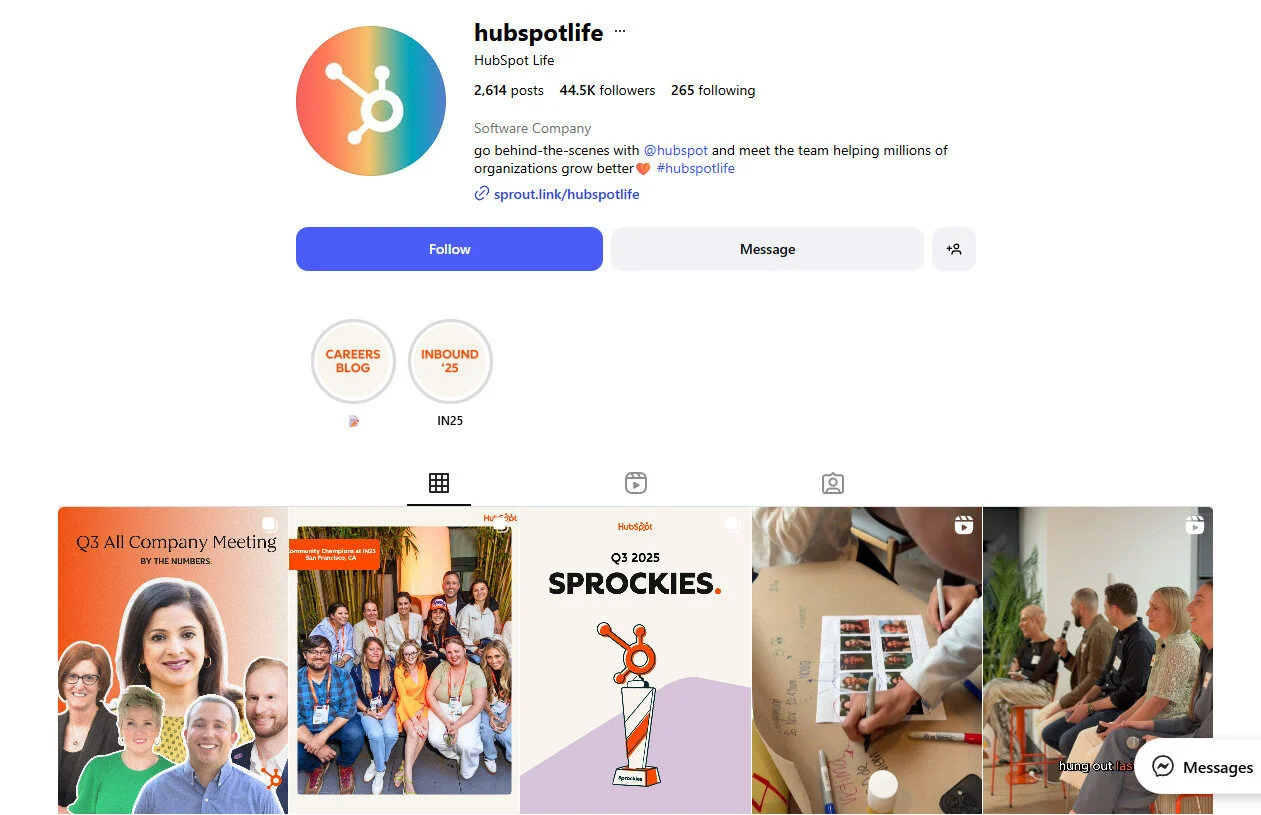
Similarly, you can create an ambassador program by offering your loyal fans – your “ambassadors”- with some exclusive perks, and encouraging them to create content about your products and services.
To start an ambassador program, make sure you first make the ground rules clear. These may be about the kinds of posts they can create, what they are and aren’t allowed to mention when posting about your brand, and even the perks and benefits that come with being an ambassador for your brand.
Here is an example from the Skimm, showcasing some ground rules they have set for their ambassadors.
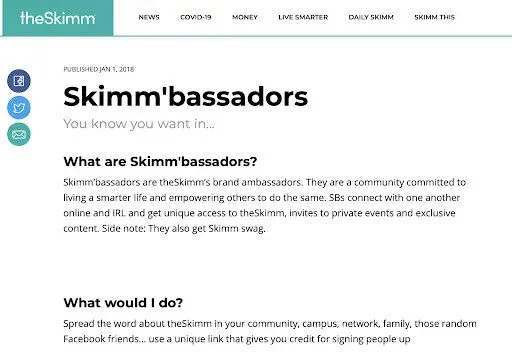
6. Offer Some Rewards to Your Content Creators
I know you’re probably thinking: isn’t this like bribing your customers to get user-generated content?
No, it isn’t. And here’s why.
As we’ve mentioned earlier, creating high-quality content’s not easy. If seasoned marketers struggle with this, imagine how much your customers would?
Offering them an incentive like G2’s Starbucks coffee treat, which they offered on Twitter, is a way of saying, “Thanks for taking the time to help.”
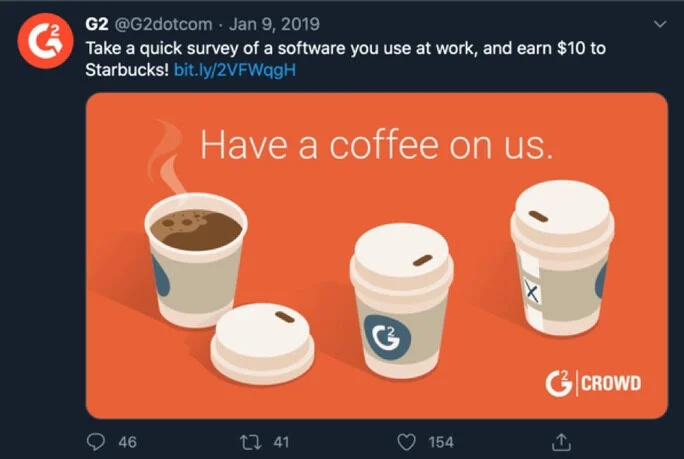
Besides, you won’t lose much when you nurture your relationship with your audience. Before long, you’ll be getting user-generated content even without incentives – because your fans are loyal enough to talk about your brand online on their own.
How To Collect & Use the UGC for Your Marketing Strategy
UGC posts would not magically do the work for you. You need a process that lets you integrate this user content into your social media marketing strategy.
Here is how you can simplify the whole process of collecting and using the UGC content:
1. Create a Submission Portal
There has to be a standard procedure for people to submit their content. This is when a UGC form comes in handy. You can create this form using Notion, Airtable, or Typeform and share it with your creators, employees, and ambassadors.
Use this form even when you are running contests, like hashtag campaigns. Ask your customers to fill out this form, so you can collect all user-generated content in one place.
2. Emphasize the Hashtag Usage
While the above strategy will work well for paid content or collaborations, not all social media users posting about your brand online will fill out this form.
For the unorganized UGC, you can ask your customers to use your branded hashtag. Next, you can use social listening tools to spot your brand content online. Next, you can set up an integration to save all posts into your marketing tools.
3. Implement a Tag and Sort System:
As you collect content, tag and categorize it based on product, campaign, or marketing goal. Start by determining a clear and logical structure that will help you sort your content, and then create unique tags for different initiatives like awareness, conversion, testimonial, etc.
Next, filter the content based on its format, such as static, video, or review, and then based on the source, like Instagram, TikTok, or email, where you plan to reuse it. This sorting keeps your library organized and ready for future use.
Once you create a depository of all the posts, it’s time to share user-generated content on social media, so it can complement your marketing efforts. But again, doing this manually can be very time-consuming.
So, use a Social media marketing tool, preferably one that lets you manage and repurpose your UGC content on social media.
Try SocialPilot’s Content Library to easily manage, schedule, and repurpose your UGC content.
Here’s how it helps you:
- You can store all your UGC posts in one shared media library.
- Collaborate efficiently with your team by adding notes, approvals, or scheduling guidelines.
- Schedule UGC posts across multiple platforms directly from your dashboard – no re-uploads or resizing required.
- You can also use the bulk scheduling feature to schedule up to 500 posts at once.
- Preview and customize post scheduling on its visual calendar.
- Track the analytics to understand UGC performance.
With SocialPilot, you can now turn your UGC content into structured, scalable content that you post on social media to improve your brand’s credibility.
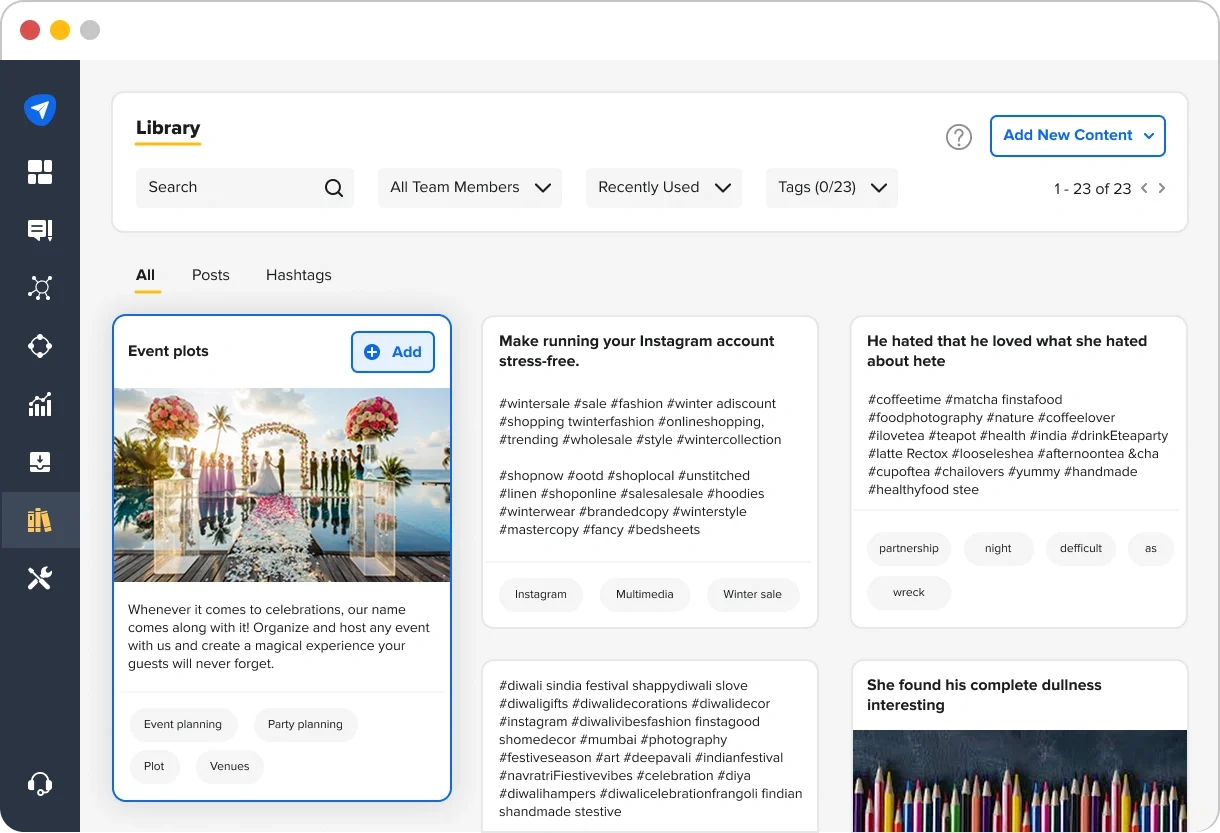
When repurposing UGC content on social media, it is important that you reach out to the original creator and ask for their permission. Also, don’t forget to use the #UGC and tag the original creator when reporting.
Because UGC content, when posted without the knowledge of the original creator, can tarnish your brand reputation and get you into legal trouble.
5. Integrate UGC in Other Marketing Efforts
UGC content should not just be limited to social media. Try integrating it into your overall marketing strategy.
You can add these posts to your website product pages, add them in your company’s newsletter, or even use them in ads. Video testimonials by your customers can be used to create some standout ad copies.
Just add some context to these posts and put some exciting offers for your prospective customers, and you will end up with some great ad material that you can leverage.
6. Run Dedicated UGC campaigns
Customer generated content is inspirational, and it impacts the purchase decisions of others to a great extent. In fact, UGC posts have a 4 times higher click-through rate compared to traditional posts.
Since these posts are clicked more, they bring more customer engagement, so it makes absolute sense for marketing teams to double down on these posts.
For instance, GoPro recently ran a campaign #GoPro Awards, rewarding users for sharing their best shots.
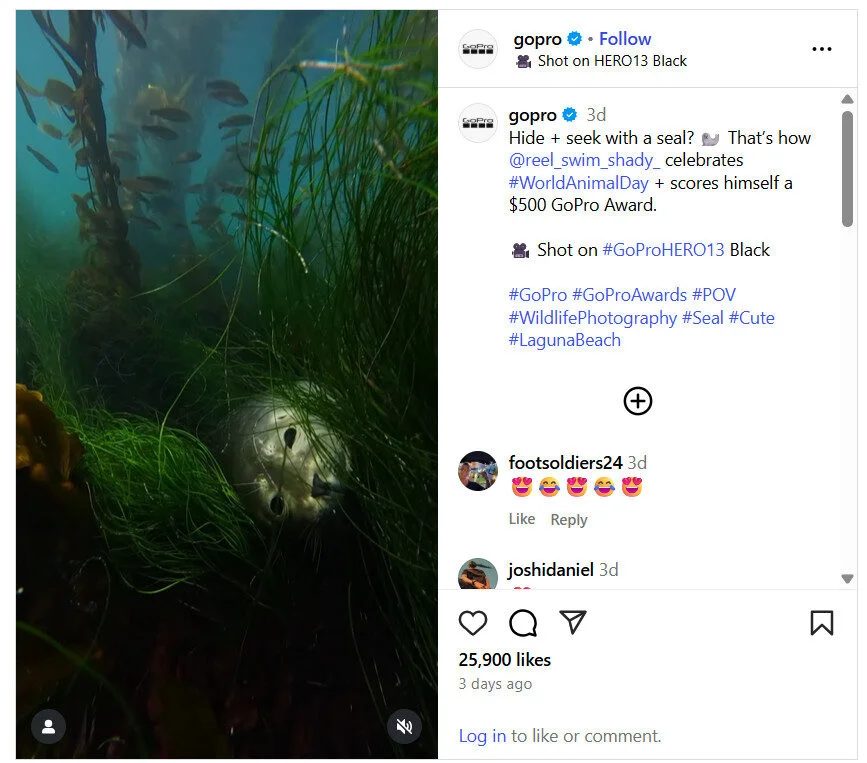
This campaign helped them integrate their UGC into their marketing strategy and improve their reach on social media.
Tips and Best Practices to Make the Most of User Generated Content
While leveraging user-generated content (UGC) is a powerful way to build trust and authenticity, businesses need to be more proactive and strategic to reap all its benefits.
Here is how you can make the most of UGC.
- Have Clear Goals for Your UGC Strategy: Not only do businesses need a clear objective to start with, but they must also set some parameters to measure the success of their UGC campaigns.
- Provide Clear UGC Guidelines: To ensure that your UGC aligns with your brand, provide clear guidelines on the type of content you want. You may also include technical requirements like aspect ratio or video length.
- Encourage UGC creation with compelling CTAs: For a consistent flow of UGC, keep your audience motivated. Run contests, giveaways, or design visually appealing moments that customers will want to naturally share.
- Collect and Organize UGC Efficiently: Use the right tools and processes to find and manage the user-generated content. Use submission portals, social listening tools, and tagging systems for hassle-free content management.
- Leverage UGC Across Channels: Integrate UGC across your marketing channels by using it for your social media posts, paid ads, email campaigns, and website.
- Measure The Impact of Your UGC: Track its engagement rates (likes, shares), website traffic driven by UGC, and conversions attributed to it to get an understanding of its overall impact.
- Optimize your UGC Strategy: Based on your performance data, adjust your social media strategy. If you find video reviews perform well, encourage more of them. If a campaign flops, learn from the data and revamp your strategy.
Using user-generated content as part of your brand’s marketing efforts can significantly boost your brand’s reputation and bring your products/services to the limelight, thus helping you generate more conversions and revenue.
But this is simpler said than done.
The whole process of generating, collecting, and reusing UGC content can feel like an endless chore. This is where social media management tools like SocialPilot can make things seamless.
You can store content in the SocialPilot’s content library and use it from time to time by posting on different social media channels.
At the same time, remember that results won’t happen overnight. Be consistent with your efforts, and you’ll soon start seeing positive results. Try out the free trial plan of SocialPilot and leverage the UGC to its fullest potential.

